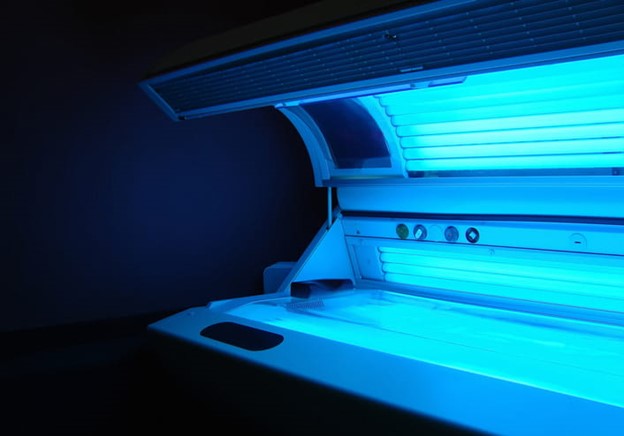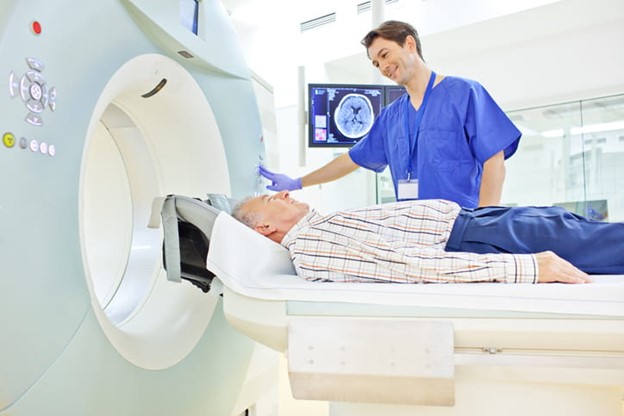
Beauty trends evolve, but some remain fashionable for decades. Tanned skin has been popular in the U.S. for the last century. Tanning beds were first used in the U.S. in 1978, allowing people living in northern states to tan year-round. Tanning beds are also popular in states known for warm temperatures and sunshine. As of 2023, two of the three states with the highest number of tanning salons included California and Florida. Using tanning beds is popular because some believe they can tan evenly using a bed and prefer to tan without spending time outdoors.
Increasing awareness about the risks of tanning and exposure to UV rays has affected the popularity of tanned skin. From 2018 to 2023, the number of tanning salons in the U.S. decreased by an average of 4.4% annually. Despite the decrease, over 57,000 tanning salons were still operating in the U.S. in 2023.
Those using tanning beds may wonder about the potential risks of tanning beds and whether it’s safe to use them. Let’s look at how they work and what you should know about the health risks of tanning beds.
Schedule your CT scan
Are Tanning Beds Safe in Moderation?
Tanning beds alter your skin color with ultraviolet (UV) rays, the same way sunlight alters skin color. Since it’s a natural process, it might seem safe; however, the UV rays must damage your skin cells to produce a suntan or sunburn. Exposure to UV rays from sunlight and tanning beds is the primary cause of skin cancer.
Tanning beds do not contain the amount of UV rays users are exposed to. They produce up to 15 times the amount of UV rays produced by the sun, increasing users’ exposure to UV rays and related health risks. Just using a tanning bed once poses a significant health risk.
Can You Use Tanning Beds Safely?
Many common myths about tanning beds suggest they can be used safely or offer other benefits that mitigate the risks.
Vitamin D
Since vitamin D is essential for health, many believed using tanning beds to boost vitamin D levels provided a health benefit that mitigated the risks. However, people can get enough vitamin D from exposure to sunlight, even in the winter, and using tanning beds does not boost vitamin D levels.
Appearance
Although you may feel tanning beds are worth the risks because you can change your skin color, tanning beds negatively impact your appearance because tanning causes premature aging. If you tan your skin, you have a higher risk of age spots and wrinkles. If you develop these issues, you may need chemical peels or dermabrasion to improve your skin’s appearance.
Other Health Risks
In addition to affecting your appearance, tanning beds pose several health risks, including the following:
- Actinic: Actinic can worsen and lead to skin cancer
- Cataracts: UV rays can cause cataracts, leading to vision problems
- Immune system suppression: High levels of exposure to UV rays can suppress your immune system, making it harder for your body to fight off infections
- Photokeratitis: Photokeratitis is eye damage that can affect your vision
Sunburn
Many believe getting a tan prevents them from burning if exposed to the sun. For decades, it’s been common practice for people to attempt to create a base tan before visiting a place known for warm temperatures and sunshine. Tanning does not prevent sunburn; any tan or burn damages your skin and increases the health risks of UV rays.
Cancer
Tanning beds increase your risk of cancer.
Do Tanning Beds Cause Cancer?
Tanning beds can cause both squamous cell carcinoma and basal cell carcinoma. The high volume of UV rays from tanning beds increases cancer risk. While people who develop skin cancer from exposure to sunlight have a higher risk of developing skin cancer on their ears, nose, face, and hands, people using tanning beds can develop skin cancer on any skin they expose while using a tanning bed.
Why Are Tanning Beds Bad for You?
Tanning beds deliver unnaturally high levels of exposure to UV rays, causing significant health risks. There are no benefits that mitigate the risks of this exposure.
What Is a Preventative Scan?
Preventative health scans are CT scans used to evaluate your body. These medical scans can collect detailed information about your organs and bones and identify potential tumors.
Preventative health scans identify potential health issues. When doctors refer to these scans, they can identify potential issues, diagnose health problems, and provide treatment options.
How Can a Preventative Cancer Scan Help?
Whether you’ve used a tanning bed once or so often you’ve lost count, you may wonder whether you’re developing health issues from exposure to UV rays and how you can find out if you’ve harmed your health. Scheduling a preventative medical scan is an effective way to put your mind at ease.
Scheduling a preventative medical scan near your Vegas location ensures you identify serious health issues, such as cancer, in the early stages. When you sign up for a preventative medical scan at Preventative Diagnostic Center in Las Vegas, you’ll get the detailed health information you need to feel confident about your health.
While our scanner isn’t used to detect skin cancer, it can detect a wide assortment of cancers and other health issues.
Book your CT scan
Sources:
Are Tanning Beds Safe? (2023).
Garone, M., et al. (2015). A Review of Common Tanning Methods.
Martin, J.M., et al. (2009). CHANGES in SKIN TANNING ATTITUDES Fashion Articles and Advertisements in the Early 20th Century.
Sarnoff, D.S. (2024). 5 Myths of Indoor Tanning, Busted!

